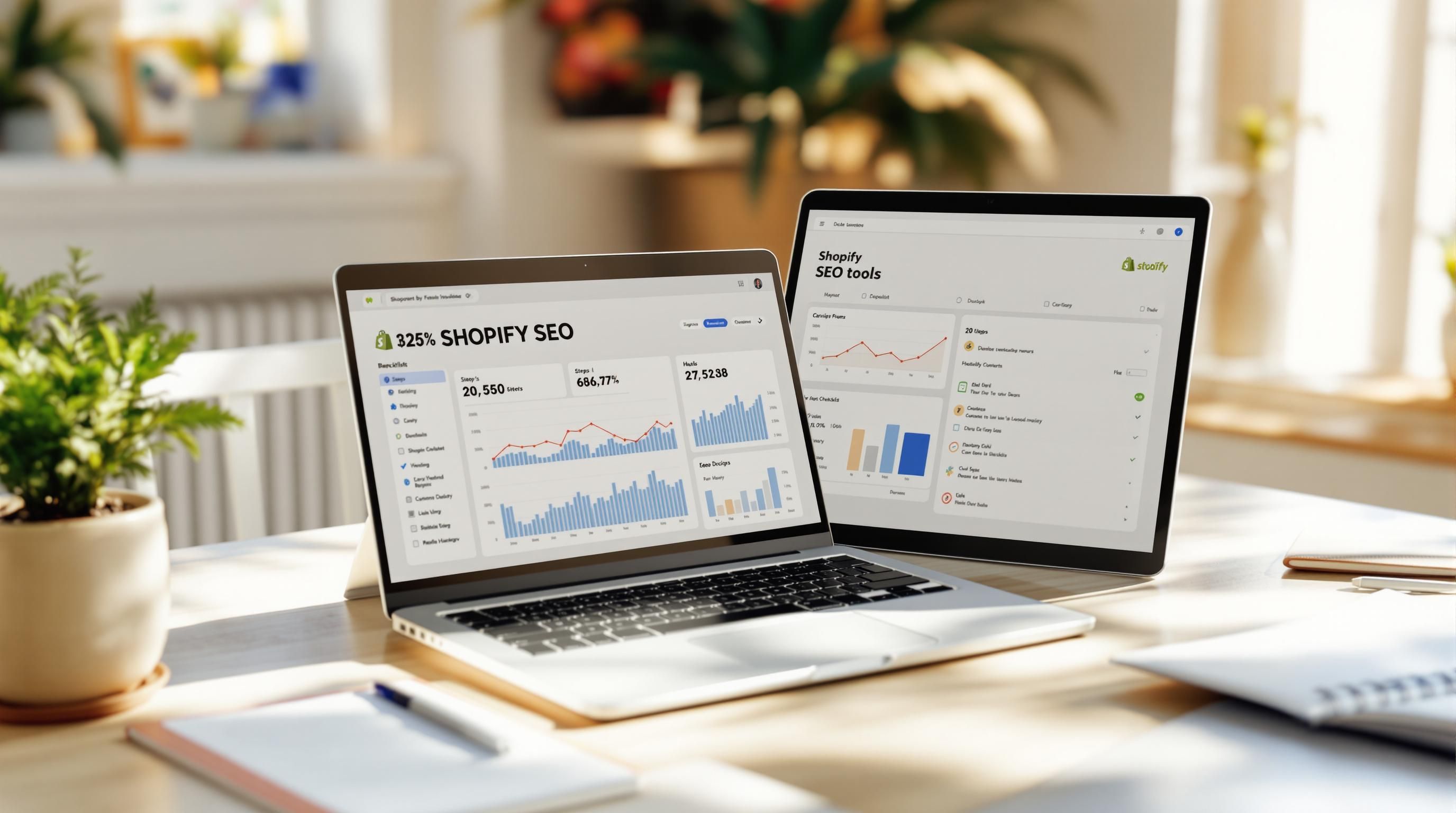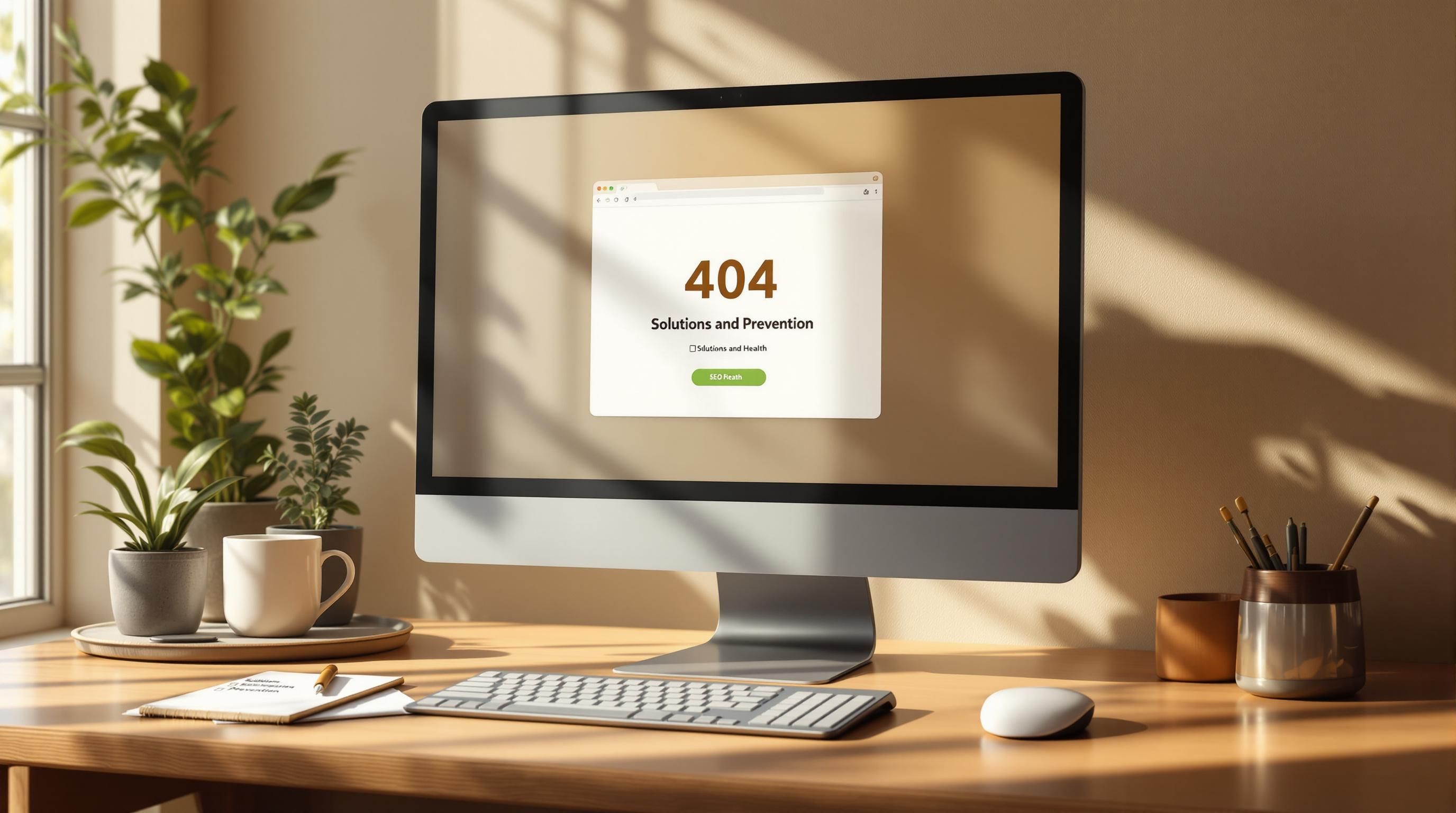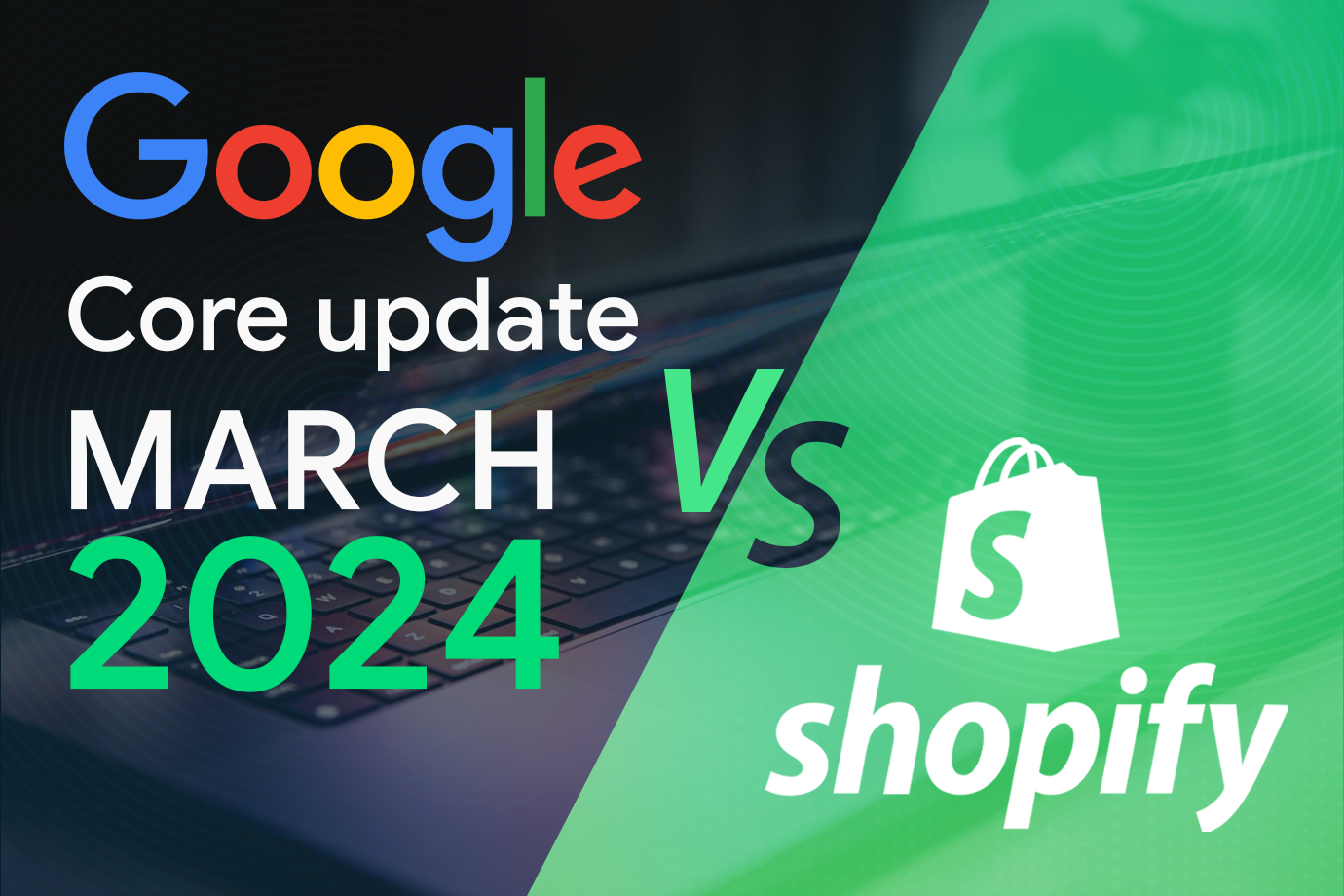Shopify SEO Checklist: 20 Steps to Higher Rankings
Boost your Shopify store’s visibility and sales with these 20 essential SEO steps, covering technical setup, on-page optimization, and content strategies to help you outrank the competition.
30.Dec.2024

Table of contents:
Shopify SEO Checklist: 20 Steps to Higher Rankings
Want your Shopify store to rank higher on Google and attract more customers? Here's a quick breakdown of the essential 20-step Shopify SEO checklist to boost your visibility and sales:
-
Technical Setup:
- Choose the right Shopify plan for advanced reporting and analytics.
- Set up tools like Google Analytics (GA4) and Google Search Console to track performance.
- Use a custom domain name for better branding and SEO.
-
On-Page Optimization:
- Perform keyword research to find terms your customers are searching for.
- Optimize page titles, meta descriptions, and product descriptions with relevant keywords.
- Add structured data (e.g., JSON-LD) to improve how your products appear in search results.
-
Site Performance:
- Speed up your site by compressing images, reducing apps, and using a lightweight theme.
- Ensure your store is mobile-friendly with readable fonts, tappable buttons, and responsive design.
-
Content Strategy:
- Start a blog targeting long-tail keywords and customer questions.
- Write unique and detailed product descriptions that highlight benefits, specs, and use cases.
-
Link Building & Local SEO:
- Build backlinks through guest blogging, partnerships, and product reviews.
- Optimize for local SEO with Google My Business, location-specific keywords, and local directories.
-
Ongoing Optimization:
- Run regular SEO audits to fix issues like broken links and duplicate content.
- Use tools like SEO Booster or JSON-LD for SEO to streamline optimization efforts.
- Monitor key metrics like organic traffic, bounce rate, and keyword rankings to refine your strategy.
Quick Comparison of Key SEO Tools:
| Tool Type | Recommended Tools | Purpose |
|---|---|---|
| Analytics | Google Analytics, Shopify Analytics | Track traffic and sales trends |
| Keyword Research | Ahrefs, SEMrush | Find high-performing search terms |
| Technical Audits | Screaming Frog, PageSpeed Insights | Identify and fix SEO issues |
| Structured Data Apps | JSON-LD for SEO | Add rich snippets to search results |
Start with these steps to improve your Shopify store's SEO and drive more organic traffic today!
Shopify SEO Optimization for Beginners - Practical Walkthrough

Getting Started with Shopify SEO
Building a strong Shopify SEO strategy starts with making smart technical choices that set your store up for long-term success in search rankings.
Pick the Right Shopify Plan
Your Shopify plan plays a key role in determining your SEO capabilities. While all plans come with basic SEO tools, higher-tier plans provide extra features like advanced reporting, which can help you analyze organic traffic trends and make informed decisions.
After selecting the right plan, the next step is setting up analytics tools to track your store’s performance.
Here’s a breakdown of features across Shopify plans to help you decide:
| Feature | Basic | Shopify | Advanced |
|---|---|---|---|
| Custom Domain | ✓ | ✓ | ✓ |
| SSL Certificate | ✓ | ✓ | ✓ |
| Advanced Reports | - | ✓ | ✓ |
| Professional Reports | - | - | ✓ |
| Custom Analytics | - | - | ✓ |
Set Up Analytics Tools
Analytics tools are crucial for monitoring your SEO progress. Install GA4, Google Search Console, and Shopify Analytics to track traffic, search performance, and store-specific metrics. Shopify Analytics offers insights like product performance and sales trends that other tools don’t provide.
Focus on metrics such as organic traffic growth, bounce rates, and keyword rankings. These will guide your optimization efforts and help you identify areas for improvement.
Once your analytics are in place, shift your attention to branding and SEO basics, starting with your domain name.
Use a Custom Domain Name
A custom domain is a must for both branding and SEO. Instead of sticking with the default myshopify.com domain, invest in a domain that represents your brand and boosts your search visibility. Adding a relevant keyword to your domain can further improve its performance in search results.
A custom domain not only enhances credibility but also strengthens branding and helps your site rank better in search engines.
When choosing your domain, go for something that’s memorable, relevant to your business, and easy to type. Avoid using hyphens or numbers unless they are integral to your brand, as these can make your domain harder to remember and share.
Optimizing Pages for SEO
Once your analytics and domain are set up, the next step is fine-tuning your individual pages to boost their visibility in search engines and appeal to users.
Do Keyword Research
Keyword research is a key part of Shopify SEO. Tools like Google Keyword Planner and Moz's Keyword Explorer can help you find terms that match your products and align with what your customers are searching for. For example, searching "athletic shoes" on Google Keyword Planner will show related terms with high search volume and manageable competition levels.
Focus on both short-tail and long-tail keywords. Short-tail keywords, like "athletic shoes", attract a broader audience, while long-tail keywords, such as "waterproof trail running shoes for women", target buyers with specific needs and a higher likelihood of purchasing.
Here's a breakdown to help you prioritize keywords:
| Keyword Type | Search Intent | Competition Level | Conversion Potential |
|---|---|---|---|
| Short-tail (e.g., "running shoes") | General research | High | Lower |
| Long-tail (e.g., "women's cushioned running shoes size 8") | Purchase-ready | Low | Higher |
| Local (e.g., "running shoe store Toronto") | Location-specific | Medium | High |
Once you’ve identified the right keywords, use them strategically in page titles and meta descriptions.
Optimize Page Titles and Meta Descriptions
Craft titles and meta descriptions that grab attention while staying under 60 and 160 characters, respectively. Incorporate your target keywords naturally.
For product pages, you can use this structure:
- Title: Primary Keyword - Secondary Keyword | Brand Name
- Meta Description: Action verb + key benefit + unique selling point + call to action
Example:
Title: "Athletic Shoes for Men - High-Quality Running Shoes | SportBrand"
Meta Description: "Discover our collection of high-quality athletic shoes for men. Perfect for running and other sports activities. Free shipping on orders over $100." [2]
Write Better Product Descriptions
Your product descriptions should be unique, detailed, and written with both SEO and conversions in mind. Avoid copying generic manufacturer descriptions. Instead, focus on creating customer-centric content that naturally includes relevant keywords.
Structure your descriptions like this:
- Start with benefits: Explain how the product solves a problem or meets a need.
- Add technical details: Include measurements, materials, or other specs.
- Highlight use cases: Describe scenarios where the product shines.
- Weave in keywords: Use keywords naturally, prioritizing clarity and readability over stuffing them in.
To take it a step further, use schema markup. This structured data helps search engines display rich details like ratings, pricing, and availability, making your products stand out in search results and boosting click-through rates [1][2].
Technical SEO Tips for Shopify
Getting your store's technical SEO right is essential for better search engine performance. While content optimization plays a key role, technical aspects can make or break your visibility in search results.
Speed Up Your Site
Site speed affects both your rankings and conversion rates. Google favors fast-loading sites because they offer a better user experience and lower bounce rates. In fact, 53% of mobile users leave sites that take over 3 seconds to load, according to Google PageSpeed Insights [1].
To improve your site's speed:
- Compress images using tools like TinyIMG to reduce file sizes without losing quality.
- Pick lightweight themes with fewer animations to ensure faster loading times [2][4].
Here's how different speed optimization techniques stack up:
| Optimization Technique | Average Speed Improvement | Implementation Difficulty | Cost |
|---|---|---|---|
| Image Compression | 30-50% | Easy | Low/Free |
| CDN Usage | 20-40% | Automatic with Shopify | Included |
| App Reduction | 10-25% | Medium | No Cost |
| Browser Caching | 15-30% | Technical | Free |
While speeding up your site is critical, ensuring your store works seamlessly on mobile devices is just as important, given the dominance of mobile traffic in eCommerce.
Make Your Store Mobile-Friendly
Google now ranks sites based on their mobile versions, thanks to its mobile-first indexing. To ensure your store performs well on mobile:
- Use Google's Mobile-Friendly Test Tool to pinpoint specific issues.
- Make sure buttons and links are easy to tap (at least 44x44 pixels).
- Use readable font sizes, with body text at a minimum of 16px.
Once your store is mobile-optimized, the next step is to help search engines understand your content better with structured data.
Add Structured Data
Structured data helps search engines interpret your content and can lead to rich snippets in search results. Use JSON-LD to add structured data like:
- Product schema (e.g., price, availability, reviews)
- Organization schema (e.g., business details)
- Breadcrumb lists (e.g., navigation paths)
"Implementing structured data through JSON-LD format can enhance search results with rich snippets, potentially increasing click-through rates by up to 30% according to our recent analyses." [3]
For easier implementation and upkeep, consider using apps like JSON-LD for SEO to automate structured data across your store [4].
sbb-itb-6dc743d
Building Links and Creating Content
Link building and content creation are key components of off-site SEO for your Shopify store. By earning quality backlinks and publishing content that resonates with your audience, you can improve your search rankings and attract more visitors.
Create a Link-Building Plan
A well-thought-out strategy is essential for earning quality backlinks. Backlinks signal to search engines that your website is credible, helping boost your rankings. Research from Moz confirms that backlink quality remains one of the most important ranking factors.
Here are some effective methods to consider:
| Link Building Method | Effectiveness | Time Investment | Cost |
|---|---|---|---|
| Guest Blogging | High | Medium | Low/Free |
| Product Reviews | Medium | Low | Product Cost |
| Industry Partnerships | Very High | High | Variable |
| Digital PR | High | Medium | Medium |
When reaching out for backlinks, make your message personal and offer something valuable, like expert insights, before asking for a link. While backlinks establish authority, creating a blog filled with useful content can also attract organic traffic and encourage others to link to your site naturally.
Use a Blog to Attract Traffic
Blogging is a great way to attract niche audiences, especially when you target long-tail keywords that address specific needs.
"Creating engaging content through blogging can lead to more shares and mentions, improving SEO performance while addressing common questions in your niche", reports Search Engine Journal [1].
Consider focusing your blog on topics like:
- Product guides or tutorials
- Analysis of industry news
- Customer success stories
- Interviews with experts
- Buying guides and tips
Beyond increasing general traffic, blogs can also help you target local customers, boosting both visibility and engagement.
Focus on Local SEO
If your Shopify store has a physical location, local SEO can be a powerful tool. Start by optimizing your Google My Business profile with accurate and consistent NAP (Name, Address, Phone) details across all platforms.
According to BrightLocal, 85% of consumers trust online reviews as much as personal recommendations [2]. Encourage your customers to leave Google reviews and respond to their feedback promptly.
To enhance your local visibility:
- Use location-specific keywords in product titles, descriptions, and landing pages.
- Build connections with local business directories and chambers of commerce.
- Improve your chances of appearing in "near me" searches by using local schema markup.
These strategies can help your Shopify store stand out, whether you're targeting a global audience or focusing on your local community. </
Advanced SEO Techniques for Shopify
Run Regular SEO Audits
Keeping your Shopify store's SEO in check means running regular audits. These checks help uncover technical problems that might be dragging down your rankings. For example, Google Search Console data shows issues like broken links, duplicate content, and crawl errors can seriously hurt your visibility.
Focus on these key areas during your audits:
| Audit Component | Frequency | Impact on SEO |
|---|---|---|
| Technical Issues | Monthly | High |
| Content Quality | Quarterly | Medium |
| Mobile Usability | Monthly | Very High |
| Site Speed | Bi-weekly | High |
| Structured Data | Quarterly | Medium |
Structured data, as mentioned earlier, helps search engines interpret your content better, often leading to rich search results. After identifying problem areas in your audits, the next step is to use tools that make optimization easier and more effective.
Use Shopify SEO Tools
SEO tools can make a big difference in how efficiently you manage your store's optimization. While Shopify offers basic SEO features, third-party apps and tools can take your efforts to the next level.
"SEO tools like these can streamline optimization, improve rankings, and save time on manual tasks", says SEMrush in their 2024 e-commerce SEO study [1].
Some of the best tools for Shopify SEO include:
- JSON-LD for SEO
- SEO Booster
- Codersy
- SEO Manager
These tools handle tasks like structured data, meta tag optimization, and technical SEO analysis, freeing up your time for other priorities. Once you have the right tools in place, it's important to keep evolving your strategy based on performance insights.
Adjust Your SEO Strategy Over Time
SEO isn't a "set it and forget it" process. Regularly analyzing performance metrics ensures your strategy stays sharp and aligned with search trends. Keep an eye on these key metrics:
| Metric | What to Look For | Action Items |
|---|---|---|
| Organic Traffic | Monthly growth trends | Adjust content strategy |
| Bounce Rate | Pages with high abandonment | Improve user experience |
| Keyword Rankings | Position changes | Update meta information |
| Page Speed | Loading time issues | Optimize images and code |
| Conversion Rate | Revenue impact | Refine targeting |
Tracking these metrics helps you spot areas for improvement and ensures your SEO efforts continue to deliver results for your Shopify store.
Steps to Improve Shopify SEO
Improving Shopify SEO involves a mix of technical setup and creating high-quality content. Start with a solid technical base, including selecting the right Shopify plan and setting up a custom domain, to ensure your site is ready for optimization.
On-page adjustments are key to boosting your search visibility. Focus on these areas:
| SEO Component | Key Focus Areas | Importance Level |
|---|---|---|
| Technical Foundation | Speed optimization, mobile-friendly design | High |
| Content Quality | Engaging product descriptions, blog posts | High |
| Local Optimization | Google My Business, local keyword usage | Medium-High |
| Performance Tracking | Analytics tools, Search Console data | High |
SEO isn't a one-time task - it needs ongoing effort. Regularly auditing your site helps you catch technical issues before they hurt your rankings. Tools like Google Analytics and Search Console can give you insights to refine your strategy. Updating product descriptions, improving page speed, and keeping your content fresh will help you stay ahead of competitors.
For store owners with physical locations, local SEO can drive more foot traffic. Optimize your Google My Business profile and focus on local keywords to improve visibility in nearby searches. Whether you're targeting local or broader audiences, being consistent in your efforts is what counts.
To maintain your rankings, stay informed about SEO changes and regularly optimize your store. Pay attention to site speed, mobile usability, content quality, local search factors, and analytics. By consistently monitoring and improving these areas, your Shopify store can achieve lasting visibility in search results.
FAQs
How to maximize SEO on Shopify?
To boost your Shopify store's SEO, you'll need a mix of solid technical setup and engaging content. Here's a breakdown of what to focus on:
| SEO Priority | Implementation Steps | Impact Level |
|---|---|---|
| Technical Setup | Set up a custom domain, install analytics tools, ensure mobile optimization | High |
| Content Strategy | Conduct keyword research, write detailed product descriptions, create blog posts | High |
| Site Organization | Use clear navigation, structured categories, and internal links | High |
| Page Performance | Optimize load times and overall speed | High |
Key Actions:
- Use Shopify's built-in SEO tools like editable meta tags and automatic sitemap generation. Pair these with Google Analytics and Search Console for tracking.
- Write detailed product descriptions (aim for 300+ words) with relevant keywords to improve search visibility.
- Ensure your site is mobile-friendly and loads quickly - both are crucial for user experience and rankings.
- Collaborate with related websites to build backlinks that strengthen your domain authority.
- Maintain a blog to answer common customer questions and discuss industry trends.
Regularly check your progress using Google Search Console, which can help pinpoint areas that need attention. Once these steps are in place, the right tools can take your SEO efforts even further.
What tools are essential for Shopify SEO?
Using the right tools is key to optimizing your Shopify store for search engines. Here's a quick guide:
| Tool Category | Recommended Tools | Purpose |
|---|---|---|
| Analytics | Google Analytics, Shopify Analytics | Monitor site performance and trends |
| Technical Checks | Google PageSpeed Insights, Mobile-Friendly Test | Improve site speed and mobile usability |
| Keyword Research | Ahrefs, SEMrush | Analyze search terms and competitors |
For better search visibility, tools like JSON-LD for SEO can help you add structured data to your site. Screaming Frog is great for technical audits, while Yoast SEO for Shopify simplifies on-page optimization. These tools work together to ensure your store is optimized from every angle.
Table of contents:
Related posts

Shopify SEO Updates
30.Dec.2024
Boost your Shopify store’s visibility and sales with these 20 essential SEO steps, covering technical setup, on-page optimization, and content strategies to help you outrank the co...

Shopify SEO Updates
09.Dec.2024
Learn how to fix broken links, set up redirects, and optimize error pages in your Shopify store to maintain SEO rankings and keep shoppers engaged.

Shopify SEO Updates
08.Mar.2024
On March 5th, 2024, Google announced the rollout of the March 2024 Core Update and March 2024 Spam Update. We talked about how to check IF our Shopifz store might trigger some issu...